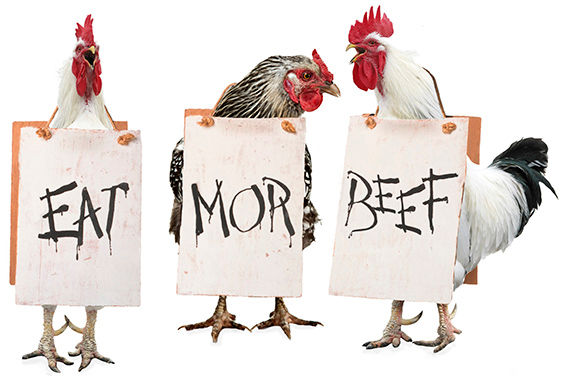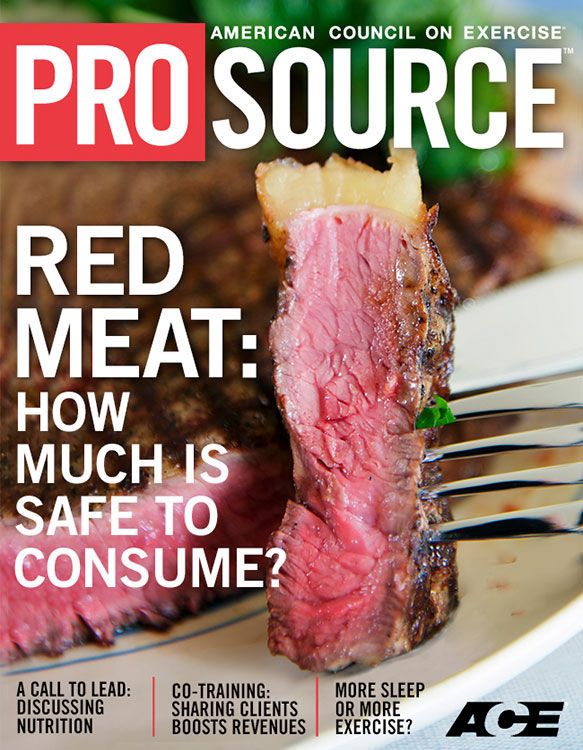
Red Meat: How Much Is Safe to Consume?

About 30 years ago, the American scientific community named cholesterol (and the foods most laden with it, red meat and eggs) Public Enemy #1 for its primary role in the dizzying rise in heart disease.
Yet two new studies have discovered that the waxy substance, which also plays important, beneficial roles in our bodies, hasn’t been acting alone. In fact, cholesterol may play a relatively minor role in the development of arteriosclerosis.
Two Surprising Studies Explained
Dr. Stanley Hazen and his research team at the Lerner Research Institute of the Cleveland Clinic, which has attracted more than 10,000 patients at risk for heart disease, conducted both studies.
Hazen focused on this large patient population in a series of experiments, the results of which, he believes, reveal the true culprits:Trimethylamine N-oxide (TMAO), a little-known compound, and its building blocks—carnitine, an amino acid found in red meat and in many sports drinks; lecithin, a phospholipid found principally in eggs; and certain intestinal bacteria.
Hazen’s first discovery was that carnitine seemed to be a key malefactor. However, further experiments revealed that it wasn’t dangerous by itself, but only after bacteria converted it to TMAO in the intestines, which was then flushed into the blood (via the liver). “The intestinal bacteria use the carnitine in red meat as fuel,” Hazen says.
In the first published study, Hazen “administered” steaks to people who ate meat on a regular basis. Within a couple of hours, the meat-eaters’ TMAO blood levels skyrocketed.
Hazen then fed steaks to vegans (who apparently waived their principles and/or health concerns in the interest of science). The results confirmed Hazen’s hypothesis that vegans would not have as many of the gut bacteria needed to make TMAO. In fact, there was almost no TMAO in the vegans’ blood after they consumed the steaks.
Next, the researchers gave the carnivores red meat or carnitine pills, then enough antibiotics to eliminate almost all of their intestinal bacteria. The result was an absence of TMAO in their blood. This led Hazen to realize that the elevated TMAO levels were a product of the gut bacteria.
The second study used the same methodology and confirmed the results of the steak study—in this case, eggs were the food given to subjects, the yolks of which contained another substance that created TMAO: lecithin. Carnitine and lecithin are chemically related, explains Hazen.
“My paper shows that TMAO causes heart disease by changing cholesterol levels,” says Hazen. “TMAO enables cholesterol to get into artery walls and prevents the body from excreting the excess. You get arteriosclerosis because you’re taking in more cholesterol and flushing out less.”
Furthermore, he explains, “Although you need cholesterol to get heart disease, the degree of your risk depends on the level you set your ‘dimmers’—diet and exercise.”
The Multimillion-dollar Question
As you might expect, the rigor of the research and the surprising results have captured the attention of the scientific community. The multimillion-dollar question is: Do Hazen’s studies prove a causal relationship between TMAO levels and heart disease? (Or: Will reducing your TMAO protect you against heart disease?)
Dr. Richard Lampman, adjunct associate professor at the University of Michigan Medical Center and also an ACSM fellow, thinks not. “For one thing, the people studied already were at risk for heart disease,” says Lampman. “Regular exercisers, by contrast, probably have a healthier diet with less meat and eggs and higher amounts of fiber. And we know that a high-fiber diet lowers cholesterol and unhealthy bacteria, while increasing the healthy bacteria.”
Lampman also questioned if the type of bacteria in fitness-oriented people is different from people who don’t work out, whether or not exercise influences bacterial content, and what effect exercise had on carnitine and lecithin levels.
Moreover, Lampman notes, “Nobody has done a study in which you fed the red meat to both athletes and non-athletes, and then compared their TMAO levels.” Lampman also speculated that processed meat, which increases the gut bacteria content, and not red meat in general, could be the bad guy. In other words: steak—O.K.; sausage—not O.K.
Lampman adds a few more roadblocks to proving the TMAO hypothesis.
“Let’s assume that these bacteria in the gut are a TMAO-making factory. Well, the treatment for this kind of bacteria would be antibiotics—but you couldn’t administer them to humans until you could identify exactly which bacteria are causing the increase in TMAO.” (Neither Hazen nor anyone else yet knows which bugs are the bugs, although Hazen claims that they constitute a “small percentage of the total gut flora.”)
Another obstacle is that more epidemiological studies, which are doable, would take decades before they’d yield accurate results.
Finally, not only are these hurdles hard enough to clear, but the proposed tests might produce results diverging from Hazen’s—perhaps radically so.
“Cause and effect hasn’t been demonstrated,” Lampman concludes, “it’s just an association.”
Dr. William Kraus, a professor at the Duke University School of Medicine and an American College of Sports Medicine fellow, finds Hazen’s studies “compelling and very clear.” In Kraus’s estimation, “These studies work in synergy with the cholesterol hypothesis. It’s a multiple-component problem. The studies show in multiple ways that bacteria in the gut can not only be modified by the food we eat, but also that it can modify that food in a way that makes us more susceptible to athlerosclerotic disease.”
Kraus adds that we should add to our list of concerns not just red meat and eggs, but also farm-fed fish, which he says “are given TMAO in quantities sufficient to send one’s TMAO blood levels soaring.”

Should TMAO Levels Be Tested?
The ultimate result of his research, Hazen asserts, would be to have the medical community include a standard TMAO level test as part of an individual’s annual physical. “So we’d be able to tell people—even those who are on healthy diets—to cut back on foods and drinks containing TMAO.”
This begs the question: Would the average person (not someone with heart disease) lower his heart attack risk if he lowered his blood TMAO levels?
The experts at least agree on this answer: Nobody knows.
However, Hazen believes that people with heart disease should try to reduce their intake of red meat and eggs. And in the future, he says, there may be other ways to reduce blood levels of TMAO. People might take probiotics to help grow bacteria that neutralize or squelch the bad bacteria associated with an increase in TMAO.
And, should Hazen’s results be duplicated and his hypothesis become commonly accepted, drug companies most certainly will take notice.
How Much Red Meat Is Safe to Consume?
So how do we act on the results of these studies now? How much red meat and how many eggs can we safely consume? We asked the experts if they thought there was a threshold beyond which eating red meat or eggs becomes dangerously unhealthy.
“While our studies were never designed to answer that question, the best nutritional advice comes from long epidemiological studies such as one conducted by the nutrition department at Harvard,” Hazen says. “It studied 100,000 people over a period of 20 to 24 years, and every four years its subjects were given questionnaires. The result was that every 3-ounce portion of red meat per day meant a 13 percent increased risk of heart disease. If the meat was processed, like hot dog, the risk rose to 20 percent.”
Hazen also cited a recent Spanish study published in The New England Journal of Medicine that showed people on the Mediterranean diet had a 30 percent reduction in cardiovascular “events.”
Lampman is less concerned about the potential hazards of a meat-based diet. “A routine diet of red meat isn’t dangerous,” Lampman argues. “You need meat to prevent anemia and for its concentration of important nutrients.”
Kraus takes a more measured approach, recommending “a prudent diet, one with several helpings of red meat and no more than two eggs a week.” He emphasizes the importance of reducing the amount of preserved and processed foods you consume.
When it comes to carnitine, Hazen says that its effects depend on the quantity and rapidity of its consumption (the faster you eat and the bigger the steak, the more you jeopardize your health). However, he adds, “Carnitine gets converted to TMAO, so ingesting it in any form is risky. Bacteria doesn’t care how carnitine gets there. Healthy people should avoid carnitine in all forms, including supplements. There’s no data to support any claims to health benefits.”
Lampman, on the other hand, doesn’t feel that carnitine “is the culprit” behind heart disease.
How should fitness professionals process this information and counsel clients, some of whom may have learned of Hazen’s studies? The experts agreed on a measured, moderate response. “It’s O.K. to tell them that they can consume red meat one to three times a month,” says Lampman, “keep their lean body mass within a normal range and consume moderate amounts of saturated fats.”
“A good rule of thumb,” adds Hazen, “is for people to eat no more than five whole eggs a week.”





 by
by 

